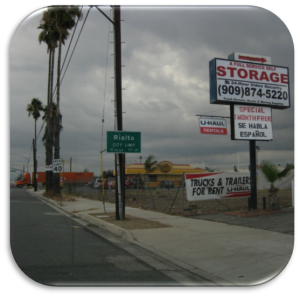 Welcome to Rialto. About 100,000 people call it home, and like much of the Inland Empire it is about an hour from everything: the beach, the mountains, the desert. But when someone says that you are an hour from everywhere, what does that say about where you are? It’s nowhere?
Welcome to Rialto. About 100,000 people call it home, and like much of the Inland Empire it is about an hour from everything: the beach, the mountains, the desert. But when someone says that you are an hour from everywhere, what does that say about where you are? It’s nowhere?
Left to its own devices, Rialto is a chaparral. Google’s definition of a chaparral is, “vegetation consisting chiefly of tangled shrubs and thorny bushes”—not necessarily the type of ecosystem that garners excitement about exploring the great outdoors. How have we changed that perspective? Project-Based Learning (PBL).
California, land of the tree huggers, but how can you be a tree hugger in a community with few to no trees? We had to start that conversation by learning what there is to love. The teachers and students in our community needed a crash course in our natural environment and how we fit into that equation.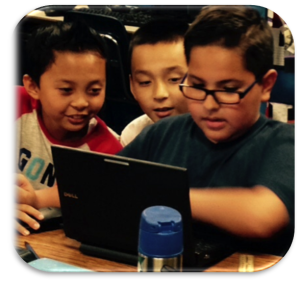
Let’s start our journey by talking about the freeway. A new freeway on ramp being constructed is as far away from nature as you can get, right? Wrong! The construction of this project was postponed because of three local endangered species. Endangered species are only those animals you hear about in the rainforest or the African plains, right? Wrong again! Our three are the Santa Ana Woolly Star (a plant), the San Bernardino Kangaroo Rat (a rodent) and the South Western Willow Fly Catcher (a small brown bird). Ok, so they aren’t exotic, but they are ours.
We used this opportunity to engage our students in an investigation about how changing environments cause local organisms to adapt, move, or die. The EEI Units Living Things in Changing Environments and Responding to Environmental Change served as the perfect complement to this PBL. Students worked on public service announcements to inform the community about native plant and animal species.
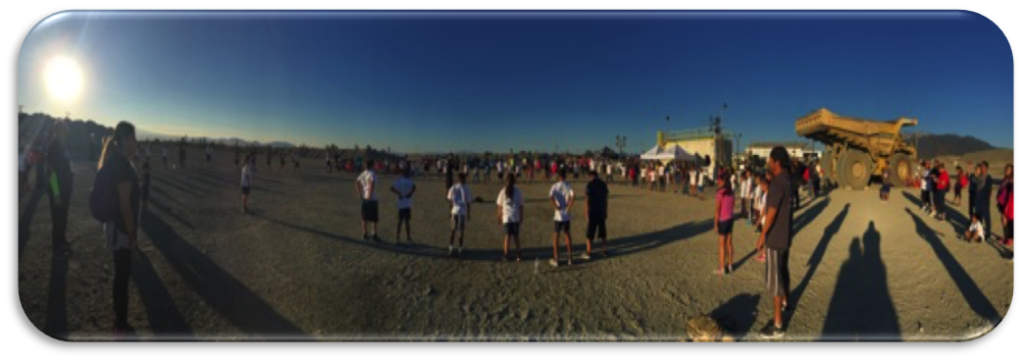
Once you get off the freeway, you’re probably on your way home. Your house is across the street from a surface quarry. From the stop sign it looks like a dirt parking lot, and in the distance you can see a few piles of rocks. Ok, no big deal right? It’s a huge deal! We invited families to a “Run Around the Rocks,” and the comments illustrated everyone’s stunned amazement. Parents that had lived across from the surface quarry from upwards of 10 years had no idea how huge the operation was! We took the opportunity to complete a PBL about geology, mining, and urban development using portions of the EEI Units The Geography of Where We Live, California’s Economy: Natural Choices and Made from Earth: How Natural Resources Become Things We Use.
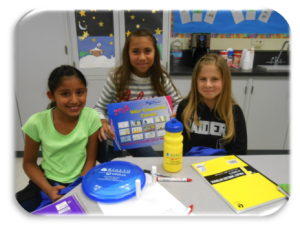 By this time we are all pretty thirsty, but what is there to drink? Well, we obtain most of our drinking water from underground aquifers thanks to our location on an alluvial fan, and because of an unfortunate historical use of the land some of that water is contaminated with perchlorate. Coupled with the drought, water in general is a pretty big issue. So, how can we use water more sustainably? We asked our students that question, used resources such as the EEI Units Our Water Sources and Uses and Earth’s Water, and partnered with the local Rialto Water Service (operated by Veolia North America) and West Valley Water District. Students built aquifers, mathematically modeled water usage, created a conservation calendar, looked at their school’s water bills, and designed plans to xeroscape the campus.
By this time we are all pretty thirsty, but what is there to drink? Well, we obtain most of our drinking water from underground aquifers thanks to our location on an alluvial fan, and because of an unfortunate historical use of the land some of that water is contaminated with perchlorate. Coupled with the drought, water in general is a pretty big issue. So, how can we use water more sustainably? We asked our students that question, used resources such as the EEI Units Our Water Sources and Uses and Earth’s Water, and partnered with the local Rialto Water Service (operated by Veolia North America) and West Valley Water District. Students built aquifers, mathematically modeled water usage, created a conservation calendar, looked at their school’s water bills, and designed plans to xeroscape the campus.
Now that we have quenched our thirst, it’s time for a snack, but where did that food come from? Hopefully, some of it was locally grown. Using EEI Units From Field to Table, California’s Economy: Natural Choices and Life and Death with Decomposers we crafted a PBL that asked, “how can we design a community garden that will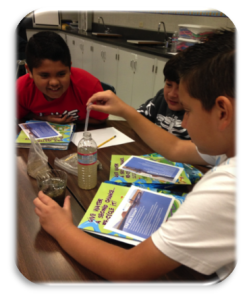 optimize the space to produce the largest yield for the senior center?” We partnered with Burrtec Waste Industry and the Family Services Association to design a space to grow fresh vegetables for seniors in need.
optimize the space to produce the largest yield for the senior center?” We partnered with Burrtec Waste Industry and the Family Services Association to design a space to grow fresh vegetables for seniors in need.
Through this process we have developed a greater appreciation of all that our community has to offer. We discovered that if you can’t hug a tree hug a rock, a rat, or a pile of decomposers; because when you find what there is to love about your community you’ll discover that environmental education is everywhere—you just have to look. Now when someone asks, “Where is Rialto?” we are excited to share that we are in a great place. We are in a community rich in environmental education experiences and resources! The question now is…where are you?

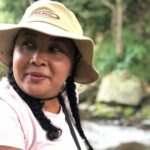
2 Responses
I am only 1 of the lucky teachers that has gotten the opportunity to work with this project. This is another reason why I state I am “Rialto Proud”. Love reading how all the pieces come together.
Your point of view caught my eye and was very interesting. Thanks. I have a question for you.